|
Indiana Stories |
|
|
Pekin Fourth of July Parade
Most towns have some kind of celebration on the
Fourth of July, but only the town of Pekin in
southern Indiana can boast that it has the longest
continually running celebration in the country. Can
you guess when it first started celebrating
Independence Day?
The first Pekin Fourth of July celebration took
place in 1830. Back then it was just a few
firecrackers and a gunshot in the air. Today, this
event is so popular that it draws noted speakers
including members of Congress, governors, college
presidents, judges, ministers, and teachers. The
town has only 1,500 people but it grows tenfold
during the celebration, with as many as 15,000
people attending.
Programs in the past have featured entertainment and
band music, including the "Spirit of 1776 Martial
Band." But the real highlight of the Pekin Fourth of
July celebration is the great parade. In early
years, when many people came in by train, a group
would meet the train and the parade would start
there. Now the parade is the main event of the day,
with novelty cars and trucks, floats of every kind,
bikes and horseback riders. |
|
|
Elwood Haynes
Have you ever heard of Elwood Haynes? Well, maybe
you have heard of some of his inventions: stainless
steel, the thermostat, and the horseless carriage.
Born in Portland, Indiana on October 14, 1857,
Elwood Haynes invented one of the first successful
gasoline-powered automobiles. He also invented
stainless steel, the thermostat used in houses, and
many other items. As a young boy, Haynes was curious
about how things worked. When he was 12 he read his
sister's college chemistry book, and by 15 he was
experimenting with alloys, metallic substances made
of two or more elements.
In 1886, natural gas was found in Haynes's hometown.
After this discovery he organized a company to
supply it to the town. In 1893, he purchased a
gasoline-powered engine and designed a "horseless
carriage," or auto. Haynes then went on to invent
the muffler and different metal alloys.
Specifically, he invented stellite alloy, which may
be his most important invention. This metal alloy
was the first step in the development of a series of
space-age alloys.
Are you interested in science and scientific
experiments? Maybe you could be the next Elwood
Haynes. |
|
|
Spirit of Vincennes
Rendezvous
Have you ever called someone's bluff? That's when
you see if a person meant what he or she said or was
just pretending. During the Revolutionary War, the
Colonists often had to bluff their way to victory.
That's what happened in 1779 in Vincennes, Indiana.
The battle was over the capture of Fort Sackville.
Lieutenant Colonel George Rogers Clark, the elder
brother of explorer William Clark, led the Colonial
forces. Clark relied on two things. First, he
counted on his troops' expert marksmanship. Second,
he used a classic military bluff. Clark had only 200
buckskin-clad pioneers as troops, but he had his men
raise enough flags for 600! Believing himself
overwhelmed by so many troops, British Lieutenant
Governor Henry Hamilton surrendered the fort. If
Hamilton had called Clark's bluff things might have
turned out differently.
The Spirit of Vincennes Rendezvous is a
Revolutionary War battle re-enactment held annually
on Memorial Day weekend. The event celebrates the
capture of Fort Sackville in 1779. Today,
participants of the Vincennes Rendezvous include
artisans, strolling musicians, and re-enactors
portraying soldiers and camp followers.
Revolution-era food is served, such as buffalo
burgers, turkey legs, and homemade pies. |
|
|
From the Emerald Isle to
Little Ireland: The Legacy of Farming in Brownsburg
Have you ever conducted an oral interview? An oral
interview documents history by asking someone
questions about his or her experiences in order to
learn what life was like through that person's eyes.
Do you know anyone whom you'd like to interview?
There are probably many people you know who could
tell you a lot about your community -- your parents,
aunts, uncles, grandparents or almost anyone who is
a few years older than you.
In Brownsburg, Indiana, Jill Taylor's third-grade
class created an oral history project. The children
made a list of interview questions for the farmers
of Little Ireland, an area settled by Irish
immigrants in the mid-1800s. They also took
photographs. After conducting the interviews, the
children wrote a report on what they learned,
selected the photographs, painted a rural Indiana
landscape, and hand-stitched a quilt that
commemorates the legacy of farming. Mrs. Taylor's
project was such a success that she was named
runner-up for Indiana Teacher of the Year.
Next time you have to do a project on something, try
and think of someone you can interview. That way you
will learn first-hand about the subject. |
|
|
Coca-Cola Circle City Classic
What does Coke have to do with college football?
Well, every year since 1984, Indianapolis, Indiana,
has celebrated its African American community with
the Coca-Cola Circle City Classic, a football game
between teams from historically black colleges. The
profits from the game go to the Indiana Black Expo
Scholarship Program, a fund that gives money to
young people for school.
What's a historically black college? It is a college
that was established in the United States at a time
when African Americans were not allowed to attend
college with white students. These institutions of
higher learning still exist today, providing
Americans of all backgrounds with a college
education.
The Indianapolis Black Alumni Council also holds a
college fair along with this football game. The fair
gives students and parents an opportunity to visit
with officials from more than 50 colleges and
universities. The events demonstrate African
American economic strength and show the importance
of education, while awarding annual scholarships
with the proceeds of the football game. |
|
|
Indiana's Indianapolis 500
You've probably heard of the Indianapolis 500, but
did you know that this auto race is held in a place
that some people call "The Brickyard"?
The Indianapolis Motor Speedway was originally built
in 1909 as a place where Indiana automobile
manufacturers could test and race their new cars. In
its early years, the Speedway was paved with bricks.
Even though most of the bricks have now been paved
over, people still call it "The Brickyard."
The Speedway was opened to the public in 1911 for
the Indy 500, a world-famous automobile race that
has taken place there almost every year since then.
More than 300,000 people come out to watch the race,
making it the biggest single-day sports event in the
world. The track is 2.5 miles around. The race
itself is 500 miles long, however, so the cars have
to make 200 laps around the track to complete the
race. |
|
|
Growing Up on the St. Joseph
River
People cannot live without water. So it makes sense
that communities are established near significant
bodies of water.
In South Bend, Indiana, the St. Joseph River has
always been at the heart of the city. The St. Joseph
River begins in Michigan, flows into Indiana and
then into Lake Michigan. All in all, it travels a
210-mile journey. In fact, the name South Bend comes
from the great bend that the river takes there.
The river has been important to Indiana for a long
time, encouraging people such as the Miami and
Potawatomi Indians to live there. Later, immigrants
settled there as well. First it was the French in
the 1600s, then the Hispanics and Latinos. The
French explorer Sieur LaSalle was the first white
man to float on the St. Joseph, in 1679.
The town of South Bend still celebrates its history
along the St. Joseph River. Kee-Boon-Mein-Kaa is a
huckleberry harvest festival in South Bend that is
hosted by the Potawatomi Indian Nation. This
festival includes American Indian dance
performances, delicious things to eat and crafts to
admire. |
|
Source:
Library of Congress |
|
|
Cool America |
 About the U.S.A. About the U.S.A.
About the U.S.A. is an American
Studies reader that examines the customs, government, and history of the
United States of America. The text provides a wealth of information on U.S.
geography and history; the roles of local, state, and federal government;
national holidays and symbols; the Constitution; and citizenship. The book,
which was written for intermediate to advanced learners of English, contains
a range of activities for language students to practice listening, speaking,
reading, and writing. (opens to a new PDF window)
Great English reading
practice. |
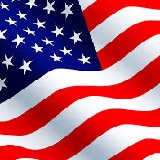 About
America About
America
Learn about the fascinating history and government of
the United States of America. Lessons include content on
American Government, American History, and Integrated
Civics. Handouts with interactive games and
student-centered activities encompass all four language
skills: speaking, listening, reading, and writing.
Great English reading practice for
beginning to intermediate students. |
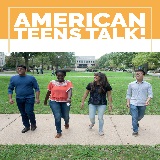 American Teens Talk! American Teens Talk!
Americans Teens Talk! is a collection of interviews of
American high school students. Each interview is accompanied by vocabulary
notes and discussion questions. The interviews in American Teens Talk! give
learners a view into the lives of adolescents in the U.S. Through the
written format of the interviews, learners are able to increase their
vocabulary, practice their reading and listening skills, engage in
discussions, and learn more about U.S. culture. These
interviews come with audio programs.
Great English listening and
reading |
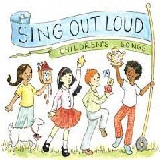 Sing Out Loud Children's Songs Sing Out Loud Children's Songs
Sing Out Loud Children's Songs includes popular children's songs in the U.S.A. Posters accompany the
individual Sing Out Loud Children's Songs. These
songs come with audio programs.
Great English listening and reading
practice. |
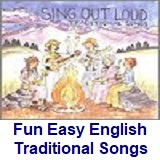 Sing Out Loud Traditional Songs Sing Out Loud Traditional Songs
The Sing Out Loud Traditional Songs
collection contains 13 traditional American folk songs and song lyrics.
Listen to the songs online, read the lyrics, and collect the posters that
accompany the songs. These
songs come with audio programs.
Great English listening and reading
practice. |
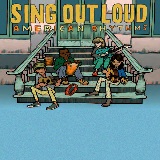 Sing Out Loud American Rhythms Sing Out Loud American Rhythms
Do you love music? Want to use it
to learn English? Check out the hip-hop inspired song "Peace" from Sing Out
Loud American Rhythms. American Rhythms includes a variety of musical genres
from many different artists in the U.S.A. These songs will appeal to teens
and young adults. These
songs come with audio programs.
Great English listening and reading
practice. |
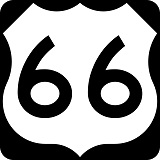 Route
66 - Famous American Road Route
66 - Famous American Road
U.S. Route 66 (US 66 or Route 66), also known as the Will Rogers Highway, the
Main Street of America or the Mother Road, was one of the original highways in
the U.S. Highway System. The highway, which became one of the most famous roads
in the United States, originally ran from Chicago, Illinois, through Missouri,
Kansas, Oklahoma, Texas, New Mexico, and Arizona before ending in Santa Monica,
California, near Los Angeles, covering a total of 2,448 miles (3,940 km). It was
recognized in popular culture by both the hit song "(Get Your Kicks on) Route
66" and the Route 66 television show in the 1960s. |
Route 66: The Highway That's the Best
(Beginner - Listening)
A video lesson which shows you an interesting place in America.
The English is
spoken at 75% of normal speed.
Great English listening practice.
This video shows travel along Route 66, the most famous road in
America. |
Chicago: The Start of Route 66
(Beginner - Listening)
A video lesson which shows you an interesting place in America.
The English is
spoken at 75% of normal speed.
Great English listening practice.
This video shows travel along Route 66, the most famous road in
America. |
Going West for Decades on Route 66
(Beginner - Listening)
A video lesson which shows you an interesting place in America.
The English is
spoken at 75% of normal speed.
Great English listening practice.
This video shows travel along Route 66, the most famous road in
America. |
Arizona: The Spirit of Route 66
(Beginner - Listening)
A video lesson which shows you an interesting place in America.
The English is
spoken at 75% of normal speed.
Great English listening practice.
This video shows travel along Route 66, the most famous road in
America. |
Route 66 California: The End of the Trail
(Beginner - Listening)
A video lesson which shows you an interesting place in America.
The English is
spoken at 75% of normal speed.
Great English listening practice.
This video shows travel along Route 66, the most famous road in
America. |
Ten Must-See Route 66 Attractions
(Beginner - Listening)
A video lesson which shows you an interesting place in America.
The English is
spoken at 75% of normal speed.
Great English listening practice.
This video shows travel along Route 66, the most famous road in
America. |
Four Famous Foods On Route 66
(Beginner - Listening)
A video lesson which shows you an interesting place in America.
The English is
spoken at 75% of normal speed.
Great English listening practice.
This video shows travel along Route 66, the most famous road in
America. |
International Tourists Drawn to Route 66
(Beginner - Listening)
A video lesson which shows you an interesting place in America.
The English is
spoken at 75% of normal speed.
Great English listening practice.
This video shows travel along Route 66, the most famous road in
America. |
|